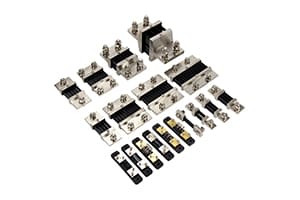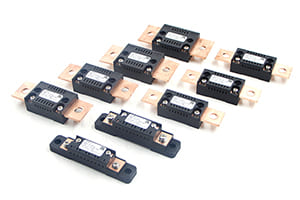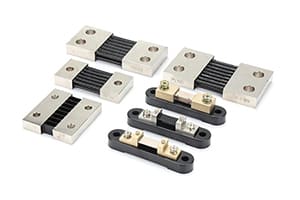
In my extensive work with battery management systems, I've seen many monitoring solutions fail to deliver reliable results. Without precise current measurement, even advanced BMS systems can't protect batteries effectively.
DC shunts are ideal for battery management systems because they provide highly accurate, continuous current monitoring essential for battery health and protection. Their stable performance and reliability make them perfect for modern BMS applications.
Through my years of experience with battery manufacturers, I've learned why DC shunts have become the preferred choice for BMS applications. Modern batteries require precise monitoring for optimal performance and longevity. Let me share insights into why DC shunts excel in battery management systems.
How Do DC Shunts Monitor Battery Health?
Every battery system I work with requires accurate health monitoring. Poor measurement can lead to reduced battery life and potential safety issues.
DC shunts monitor battery health by providing precise current measurements during charging and discharging cycles. Their accuracy enables detailed analysis of battery performance and early detection of degradation.

The role of DC shunts in battery health monitoring is crucial. We've developed specialized shunts that maintain accuracy across wide current ranges and operating conditions. Our designs enable precise measurement of both charging and discharging currents.
These shunts incorporate advanced features for reliable long-term monitoring. We use high-stability materials that ensure consistent measurements over time. Each unit undergoes extensive testing to verify performance under various battery operating conditions.
Why Use DC Shunts in Battery Protection?
Throughout my career, I've helped countless clients implement effective battery protection systems. Accurate current monitoring is the foundation of reliable protection.
DC shunts are essential for battery protection because they provide real-time current monitoring with exceptional accuracy. Their reliable measurements enable immediate detection of dangerous conditions and protective responses.

Battery protection requires precise current measurement under all conditions. Our protection-focused shunts feature enhanced response times and superior accuracy. We've developed specific models that excel in detecting overcurrent and fault conditions.
The latest designs incorporate advanced thermal management and enhanced connection systems. These features ensure reliable protection even during extreme events. Our testing protocols verify protective function under worst-case scenarios.
What DC Shunt Features Support BMS?
In my consulting work with BMS designers, I've identified key features that maximize system performance. The right features can significantly improve battery management capabilities.
DC shunts support BMS through high accuracy, temperature stability, and integrated monitoring features. These capabilities enable precise state-of-charge calculation and optimal battery management.

Key features of our BMS-optimized shunts include enhanced temperature compensation and precise calibration. We've developed specialized mounting systems that ensure reliable connections and accurate measurements. Our latest designs incorporate features specifically for modern BMS requirements.
Recent innovations include integrated temperature sensors and enhanced communication capabilities. These features enable better integration with battery management systems. Our continuous development ensures our shunts meet evolving BMS requirements.
Conclusion
DC shunts are fundamental to effective battery management systems. Through precise current measurement, they enable accurate battery monitoring, protection, and optimization. My experience has shown that proper shunt selection and implementation is crucial for BMS success. As battery technology continues to advance, the role of accurate current measurement becomes increasingly important. The reliability and precision of DC shunts make them essential components in modern battery management systems.

















 Online | Privacy policy
Online | Privacy policy